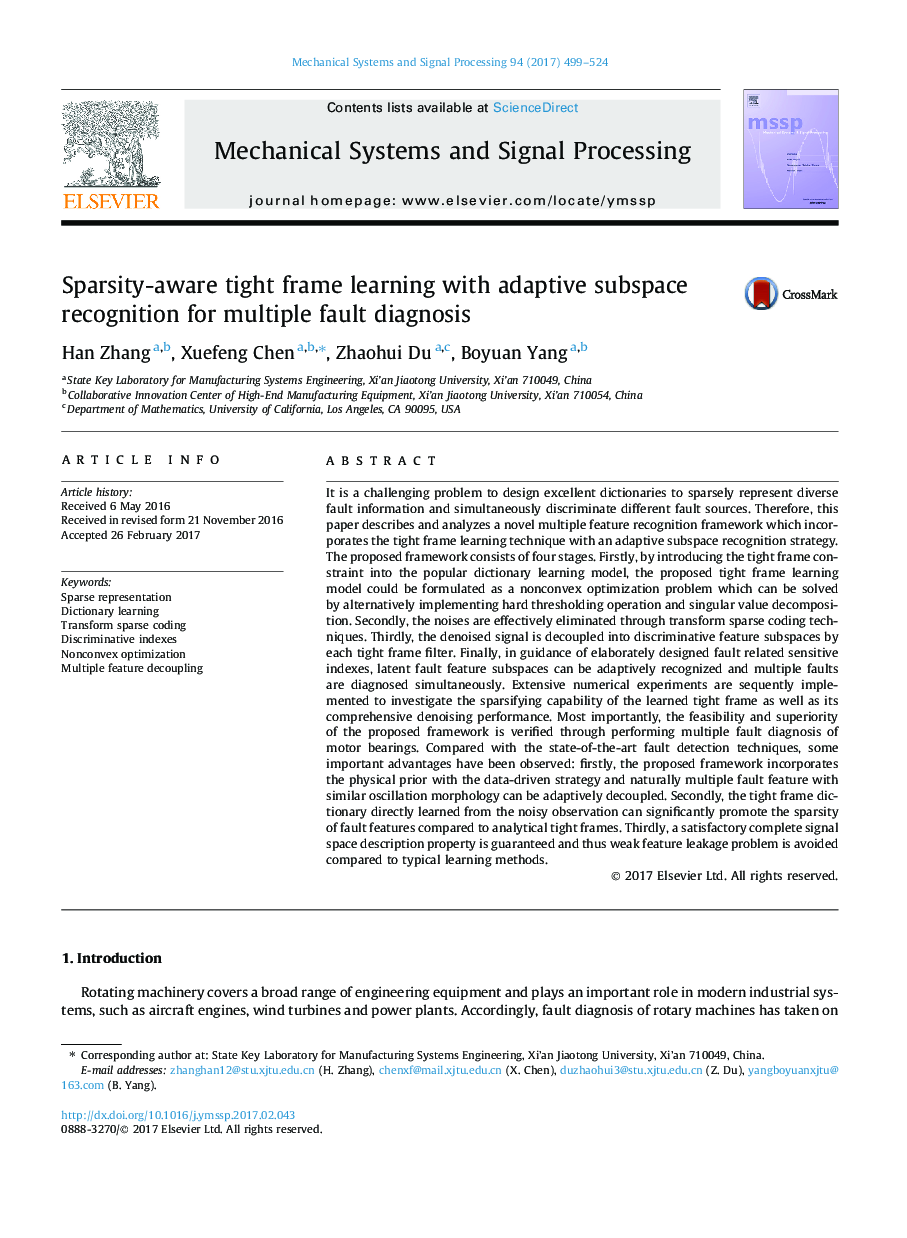| Article ID | Journal | Published Year | Pages | File Type |
|---|---|---|---|---|
| 4976954 | Mechanical Systems and Signal Processing | 2017 | 26 Pages |
Abstract
It is a challenging problem to design excellent dictionaries to sparsely represent diverse fault information and simultaneously discriminate different fault sources. Therefore, this paper describes and analyzes a novel multiple feature recognition framework which incorporates the tight frame learning technique with an adaptive subspace recognition strategy. The proposed framework consists of four stages. Firstly, by introducing the tight frame constraint into the popular dictionary learning model, the proposed tight frame learning model could be formulated as a nonconvex optimization problem which can be solved by alternatively implementing hard thresholding operation and singular value decomposition. Secondly, the noises are effectively eliminated through transform sparse coding techniques. Thirdly, the denoised signal is decoupled into discriminative feature subspaces by each tight frame filter. Finally, in guidance of elaborately designed fault related sensitive indexes, latent fault feature subspaces can be adaptively recognized and multiple faults are diagnosed simultaneously. Extensive numerical experiments are sequently implemented to investigate the sparsifying capability of the learned tight frame as well as its comprehensive denoising performance. Most importantly, the feasibility and superiority of the proposed framework is verified through performing multiple fault diagnosis of motor bearings. Compared with the state-of-the-art fault detection techniques, some important advantages have been observed: firstly, the proposed framework incorporates the physical prior with the data-driven strategy and naturally multiple fault feature with similar oscillation morphology can be adaptively decoupled. Secondly, the tight frame dictionary directly learned from the noisy observation can significantly promote the sparsity of fault features compared to analytical tight frames. Thirdly, a satisfactory complete signal space description property is guaranteed and thus weak feature leakage problem is avoided compared to typical learning methods.
Related Topics
Physical Sciences and Engineering
Computer Science
Signal Processing
Authors
Han Zhang, Xuefeng Chen, Zhaohui Du, Boyuan Yang,
